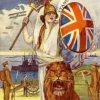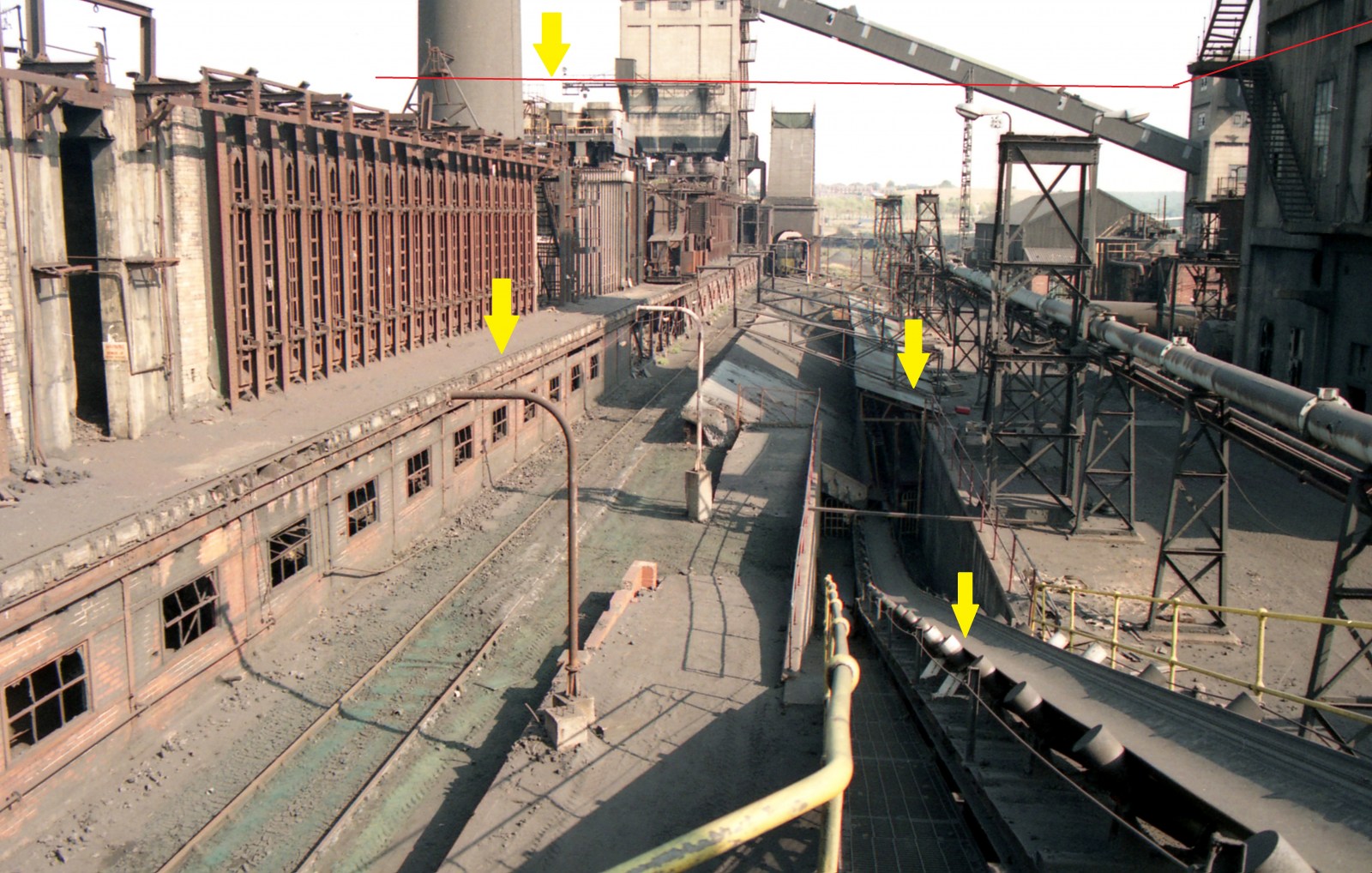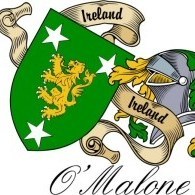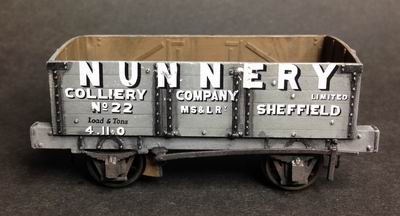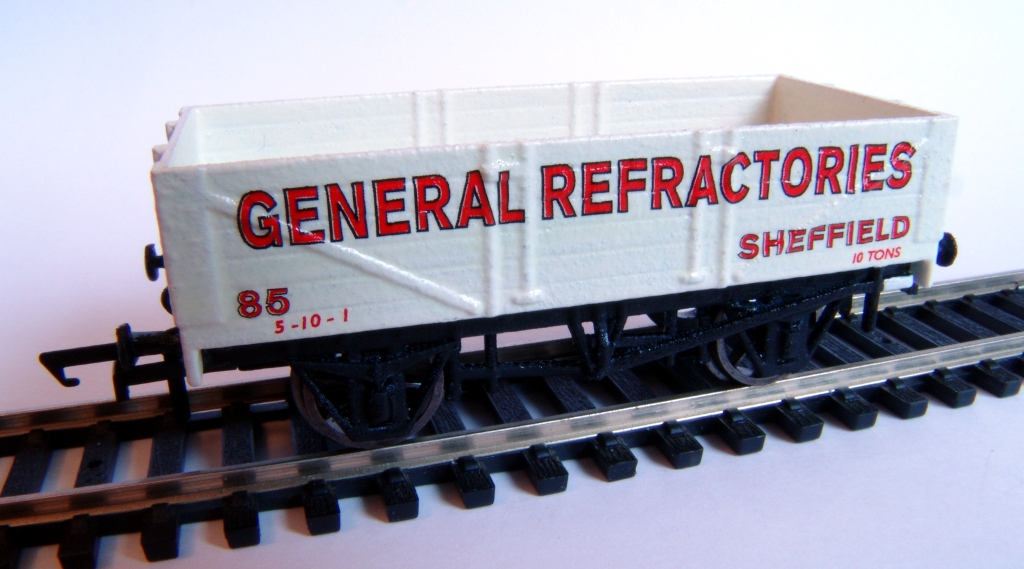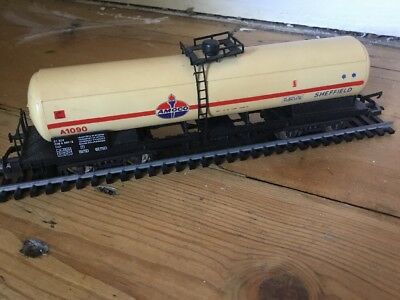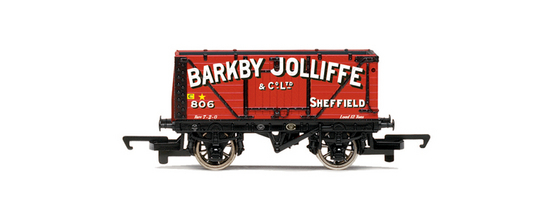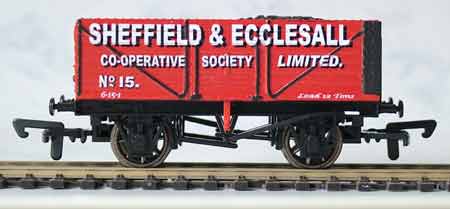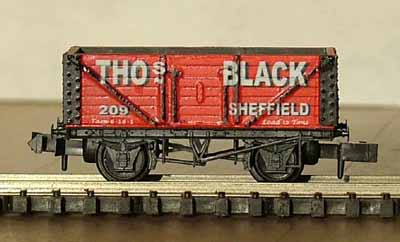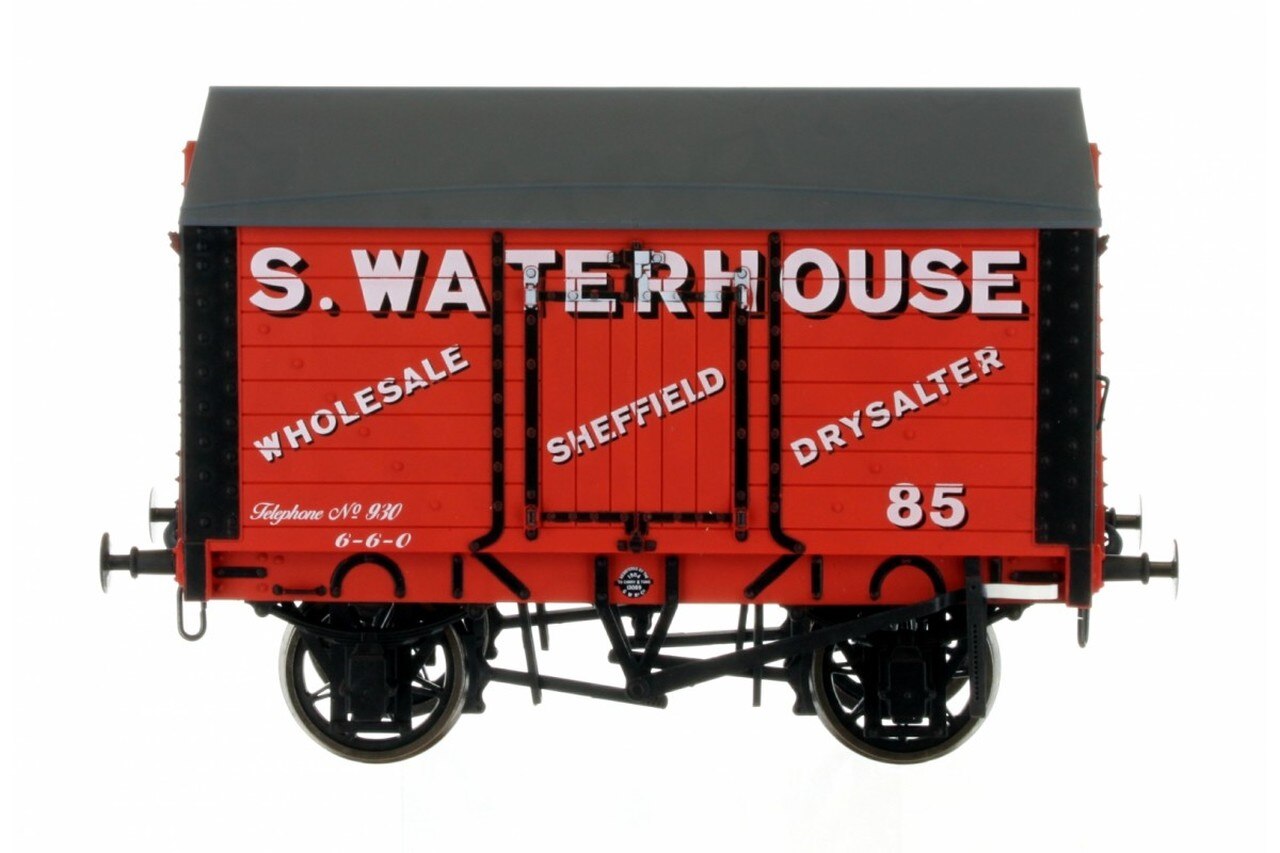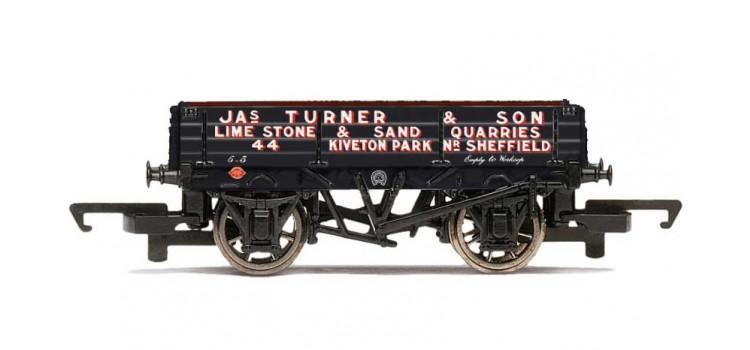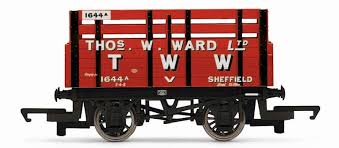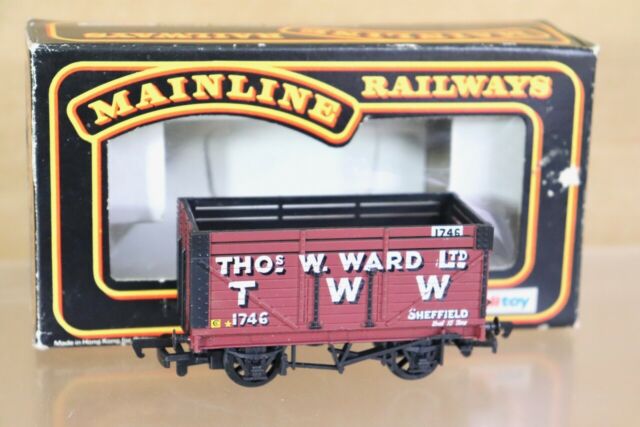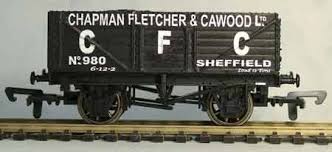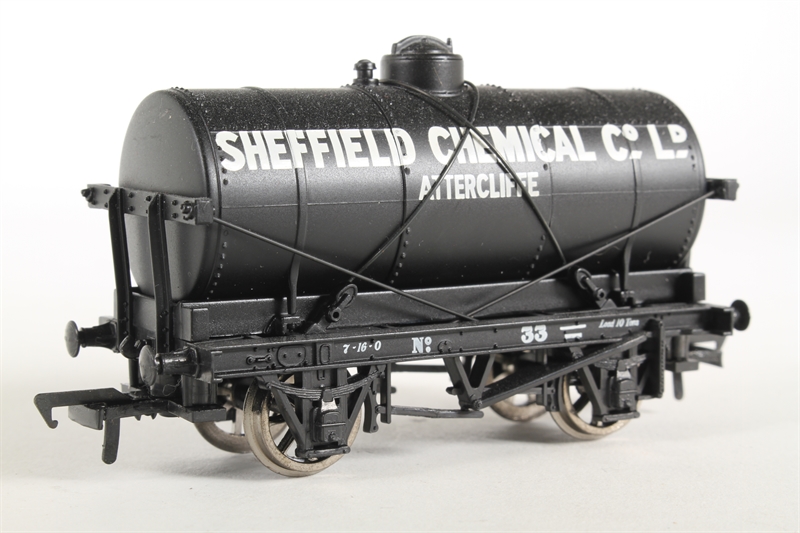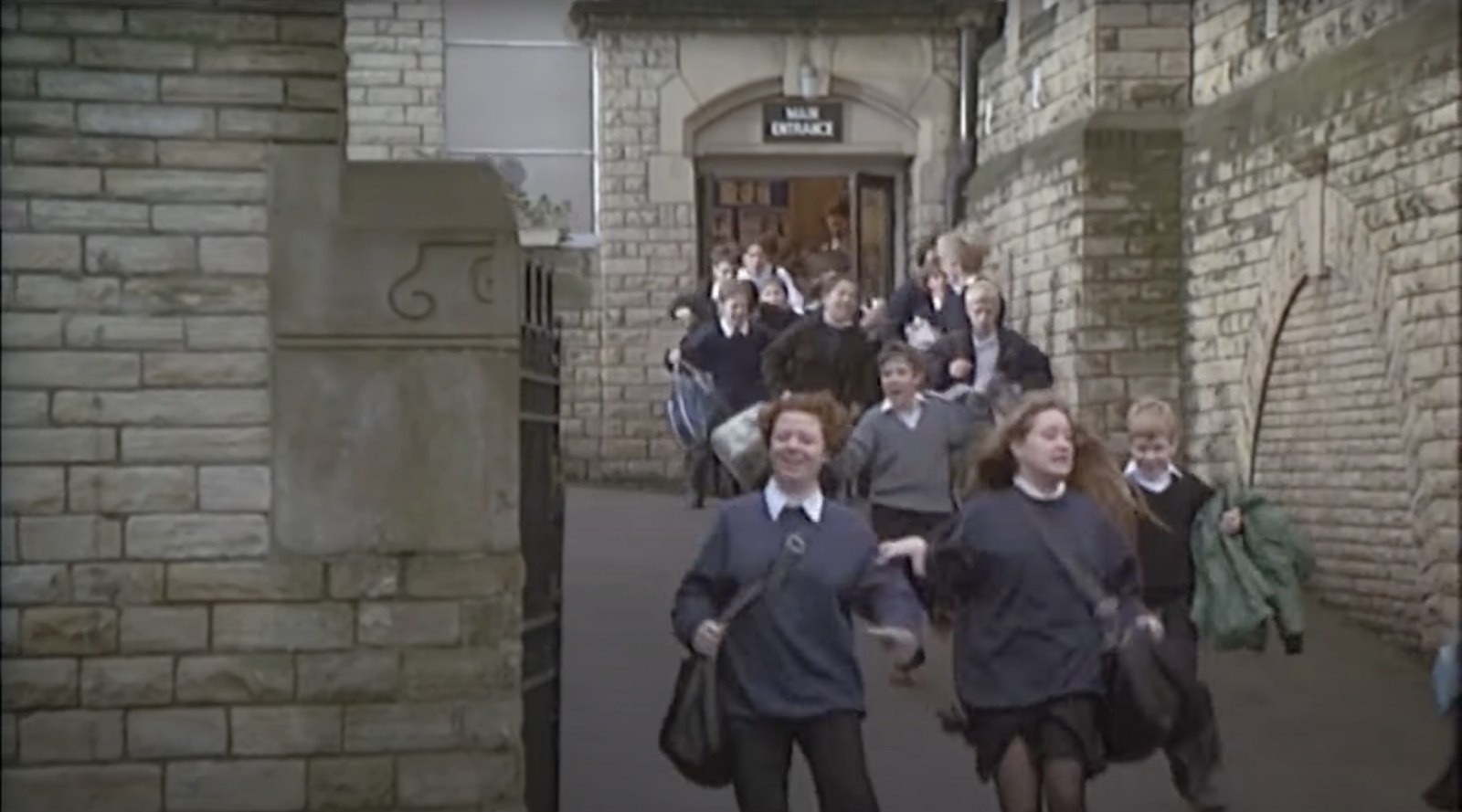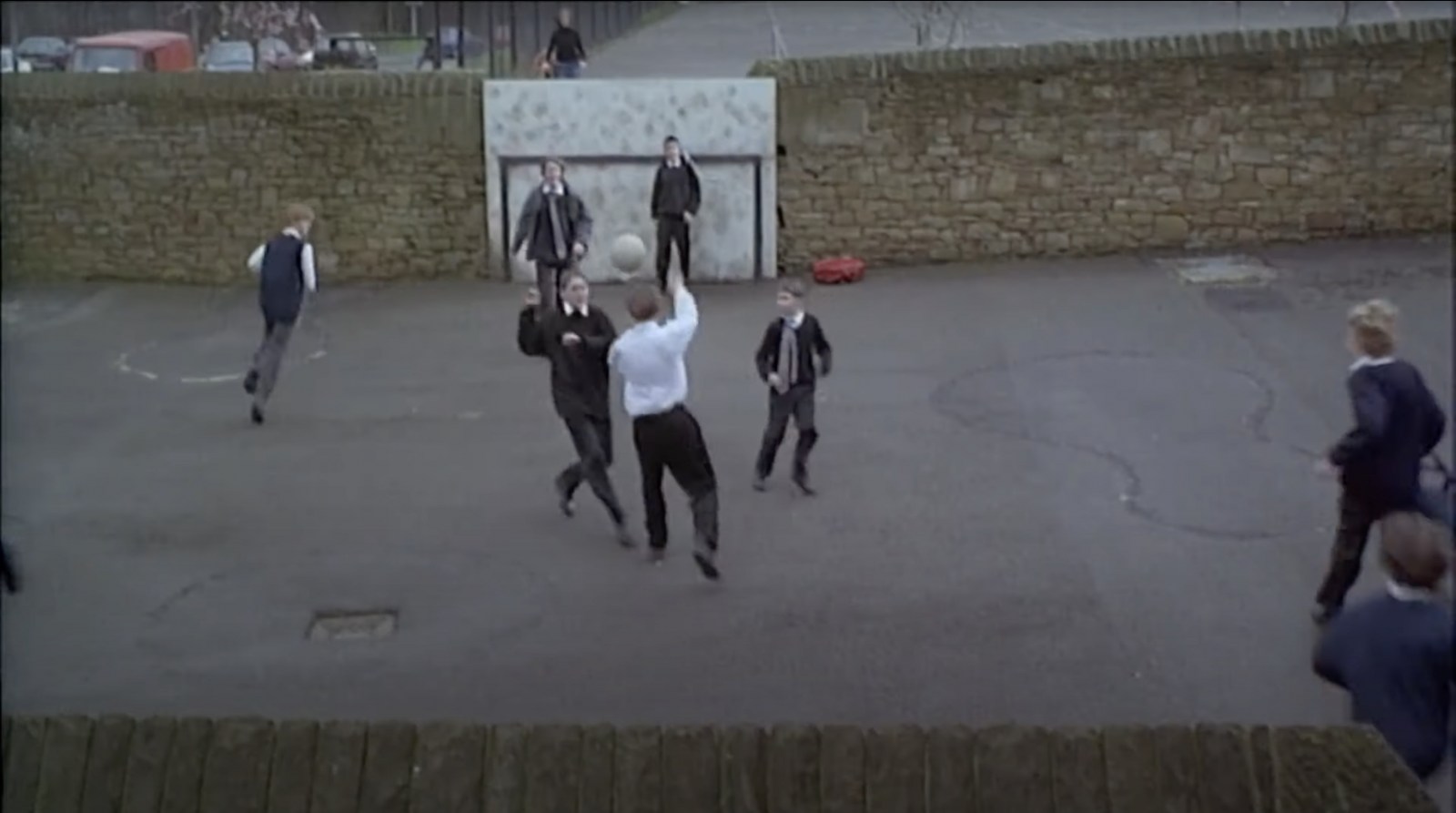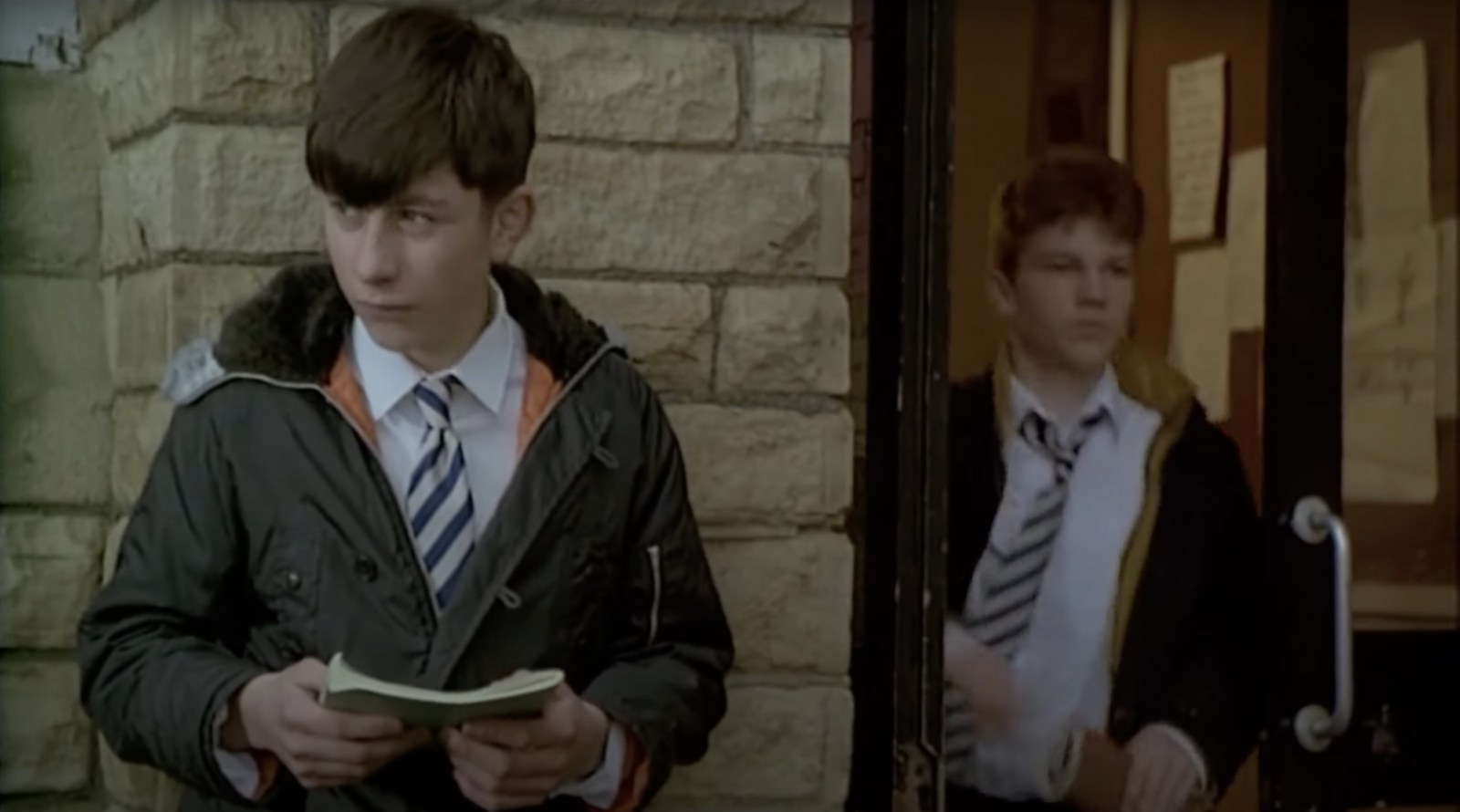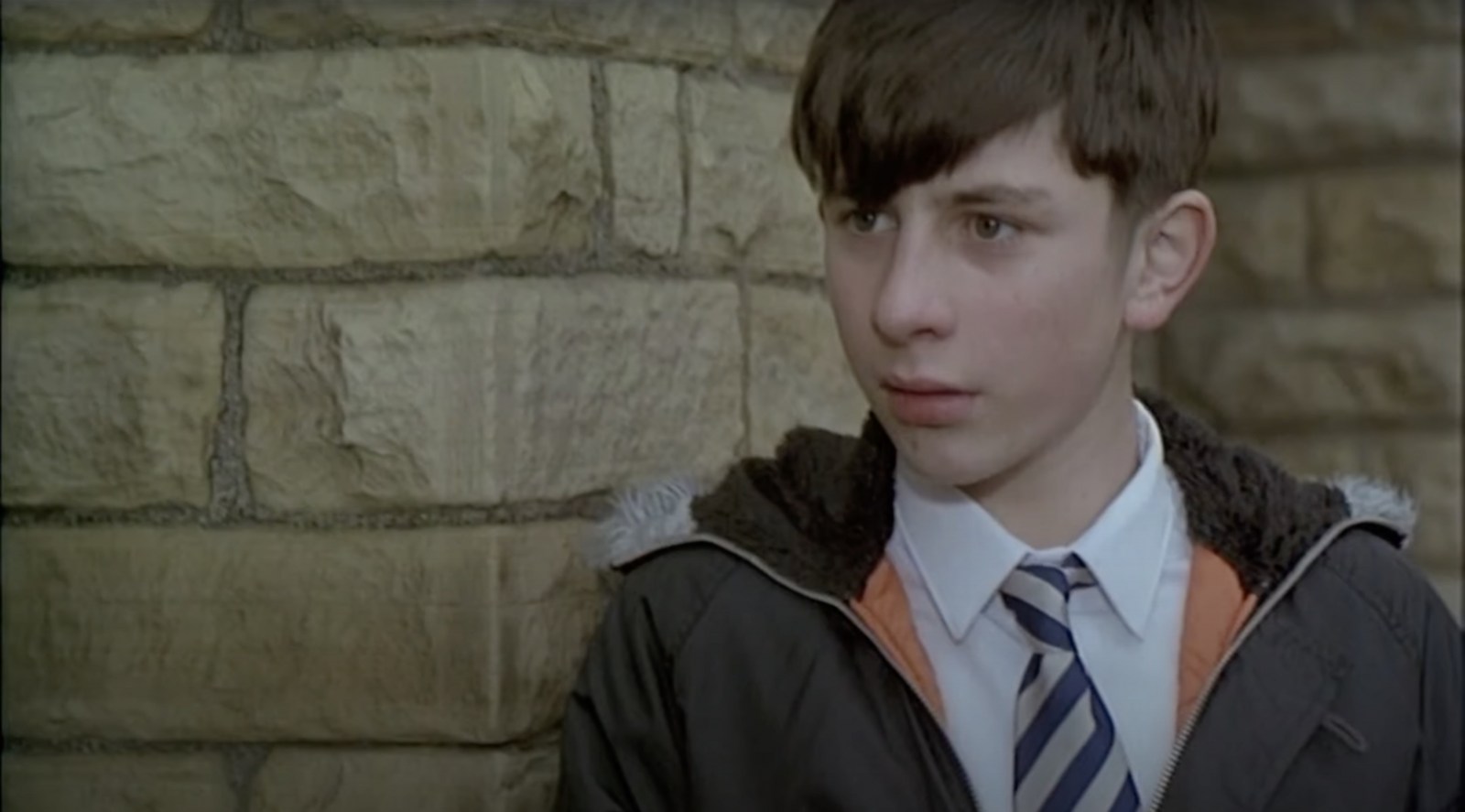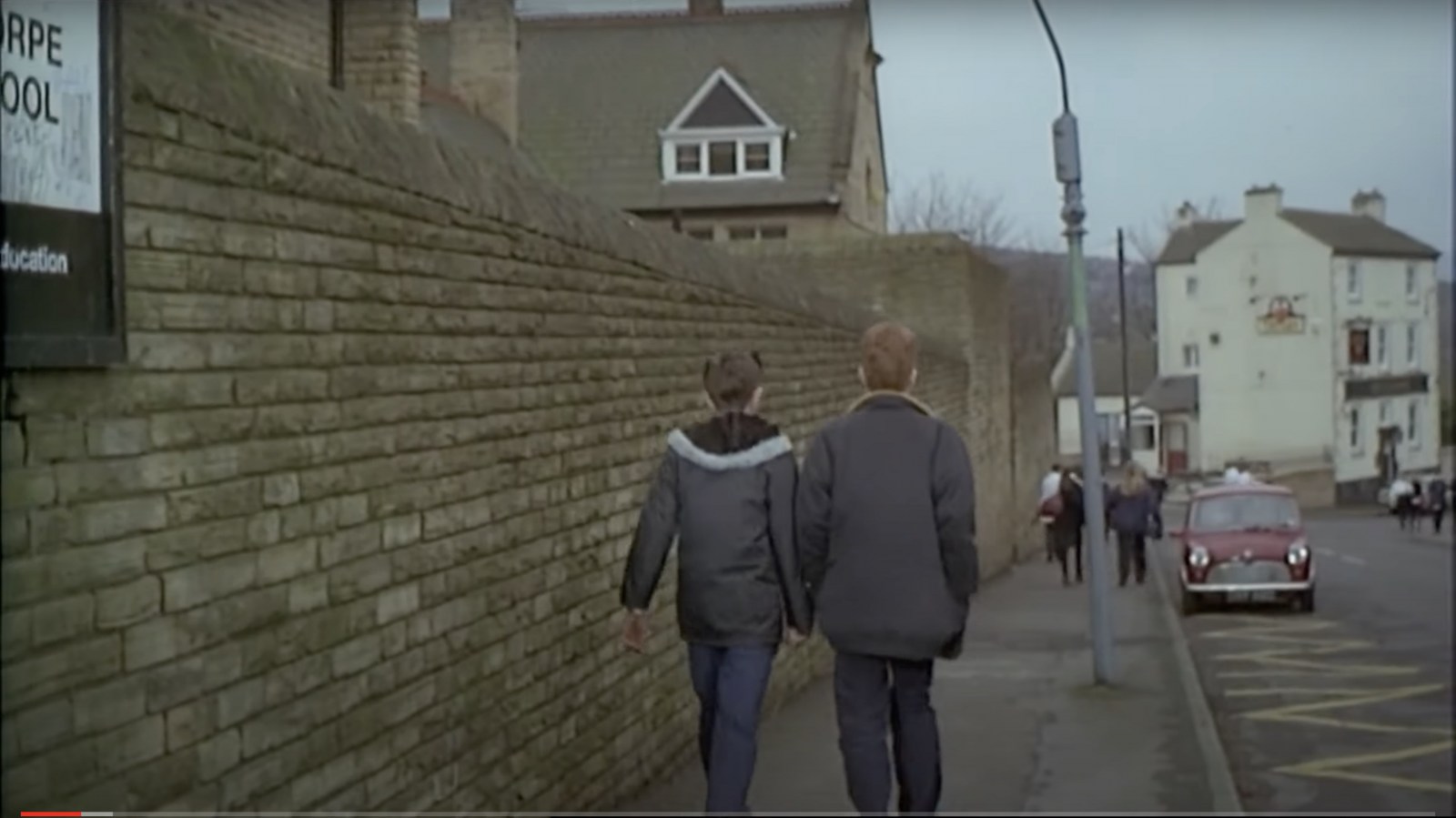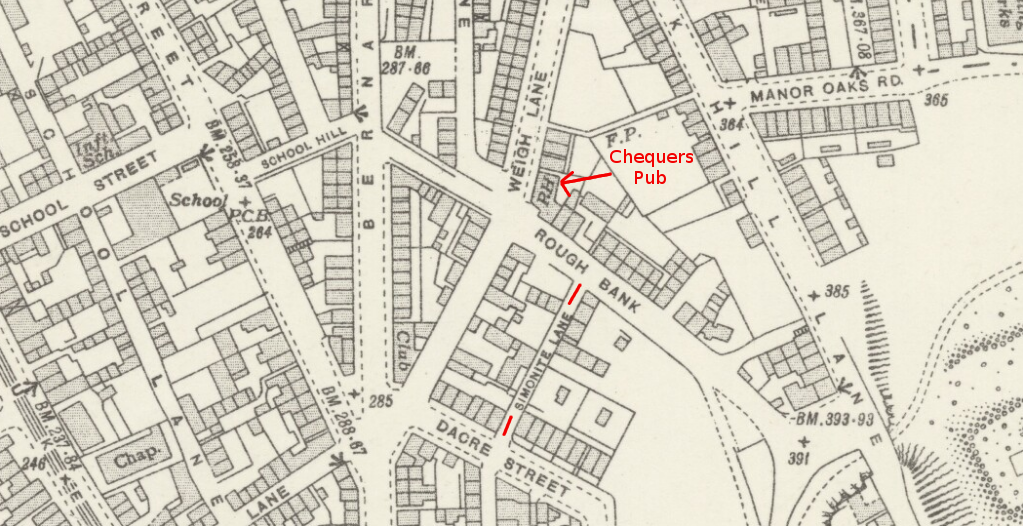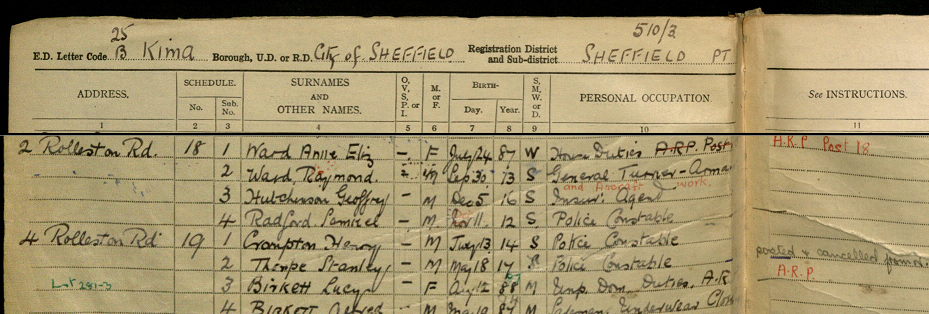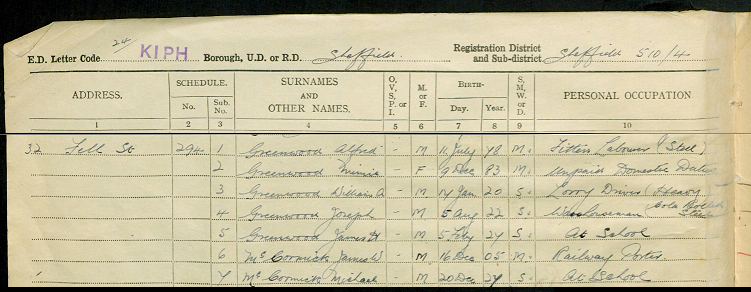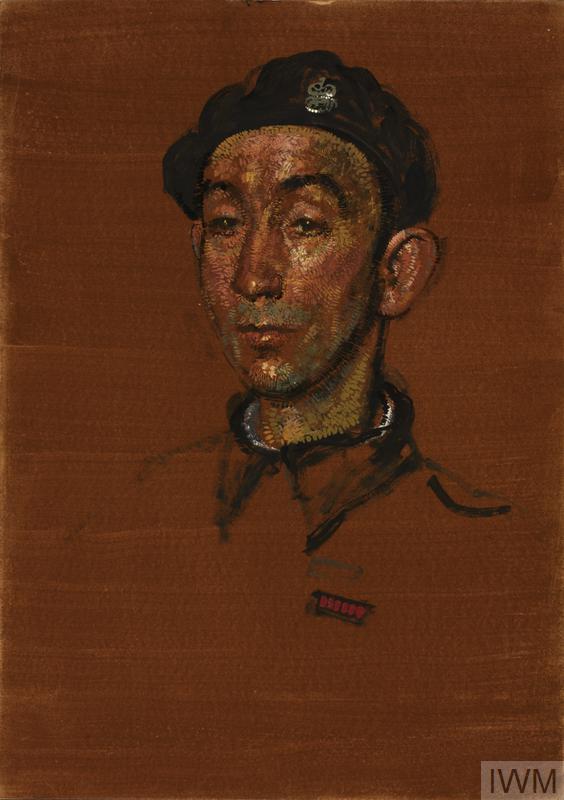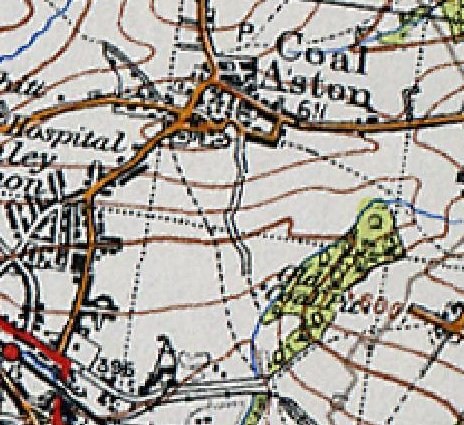Search the Community
Showing results for 'coal pit lane'.
-
Spent most of my Christmas, and for that matter, my Easter and Summer holidays working at the British Steel Coking and Chemicals Plant, at Orgreave. That would have been 1976, 1977, 1978, and 1979. Of course, having family connections helped a good deal, but it provided a great financial help in funding my way through University. In fact, I would earn far, far more by this holiday work, than the total annual worth of my student grant. Generally, I was assigned to the 'yard staff', which of course, meant general labouring, but in reality, you were there for holiday and sickness relief, so I did get to work on the coal tipper grates, coal blending houses, coke ovens, in some of the chemical processing works, and from time to time, with the brickies, and in the Orcot Factory, the test oven facility and such. The pay was excellent, especially for a generally skint youth such as myself, and it was a fantastic insight into working life and for what was to come later. I even learned how to drive a dumper truck, fork lift truck, and tractor there. The on-site canteen served good, plain food, and their chips were a definite favourite. There where all sorts of premiums paid for working overtime, such as for a 'double-un', (sixteen hour shift), or even, a 'treble-un', (twenty-four hour shift). If you did either one of those, you got free-meal tickets. The work at times could be hard, as you would expect, and today, in hindsight, some of the jobs would be deemed very hazardous. However, when that age, you consider yourself invincible don't you? If you worked in the anthracine plant, and didn't wear barrier cream, then you got an exaggerated kind of sun-burn. If you worked on the coke-oven tops, and didn't keep moving about, the soles of your boots would stick to the deck - and they didn't last that long either. The heat could be tremendous and in order to keep you hydrated, you were given these white salt tablets, about the size of a two-pence piece, which you dissolved in dilute orange juice - but it still tasted vile. Most memorable moment - one dark, very wet Christmas night, about two o'clock in the morning, standing on top of the access platform above the gas pipes which carried the exhaust gases from number six coke oven battery to the condensers and scrubbers. About forty feet or so, up in the air, on a three feet wide walkway - four of us, bawling out Christmas carols very badly to the lads below, working on the 'guide bench'. Another memorable moment - working on the coke grate, where the coke car dropped the quenched coke into a long, sloping hopper with row of manually operated gates at the back, which you used to feed the coke onto the conveyors which carried it over to the coke screens, for grading and loading into railway wagons. Of course, you get a lot of sulphurous gases off of freshly quenched coke - if any of you have ever doused a coal, or a coke fire with water - you will know what I mean. So, in order to mitigate the taste on your throat, you smoked a lot, and you kept your cigarettes on a 'shelf' at the back of the walkway over the coke conveyor. One night, I was working with an old hand, and I noticed that my cigarettes were going down at a rapid rate. Being young, inexperienced, and a little in awe of this old hand, I thought that I would try and be politic. So, I said, 'keep an eye on my fags will you - someone keeps coming down and nicking them'. 'Better not let me catch the b******' he replied, 'there aren't enough for three of us'. By the time that the attached photograph was taken, 30/09/1990, number six battery, to the left-hand-side was already out of use, and the gas pipes, whose approximate route is denoted by the red lines, long dismantled. However, the 'guide bench', and coke hopper are still extant - denoted by yellow arrows.
-
In the late 70's, when I was still at secondary school, I used to supplement my "income" by working Friday nights and Saturday mornings for a coal dealer, whose business was focused around Handsworth, Woodhouse, Canklow, Brinsworth and such areas. My father did so, as well. At that time, the prices were:- Coal: £0.60 per bag [cwt] Coke: £0.75 per bag [cwt] Smokeless £1.11 per bag [cwt] - this being "Room heat" briquettes, made at the Coalite Works at Bozer. What amazes me now is that I could actually work out people’s bills in my head, without the assistance of a calculator back then and give them the right change. We collected most monies on a Friday night. Regular bad payers were “rewarded” by receiving extra quantities of fines [“Slack” we called it], in their deliveries. There always seemed to be plenty of “slack” in the coal received in railway wagons. I still love the sight and smells of an open coal fire and the shapes made by the flames always seemed to be very therapeutic. Many a time, I fell asleep watching the fire, when I was young. My grandparents, who lived in the centre of Woodhouse, retained their coal fire in the “living room” and their “range” in the kitchen until 1976, or thereabouts, when the property was modernised. I must admit, that I greatly miss “a proper coal fire”, although, perhaps not the shivering wait for the thing to regain its strength, on cold, winter mornings, in the days before central heating.
-
There's something about a coal fire, just to sit in front of a coal fire in a darkened room and to watch the gas escaping from the lumps of coal and igniting, flames flickering, smoke billowing up and looking for shapes or faces in the glow of the fire. When I was a child on the Manor all the homes had a Yorkshire Range, or something similar, my Mother used it to boil vegetables on the open fire, the joint and meat in the oven and the kettle was always ready for boiling to make tea. Once a week it was Black-Leaded and given a good clean, the a wave of Tiled fireplaces swept over the Manor and these fantastic Ranges were ripped out and scrapped, something that everybody regretted after a few years but by then it was to late. We had a regular coal delivery plus "Eggs" which looked like some binding agent and coal dust pressed in a mould and came out shaped similar to an egg but it burnt and that was the main thing. Every morning the ashes of the previous days fire was riddled and coal that had more or less turned to coke was saved and put on the new fire, the ashes and dust was either scattered on the garden or put in the Dustbin hence the name "Dustbin". Memories you cant beat `em.
-
I firmly believe that the upsurge in litter and dumping was caused by the building of new homes without fireplaces and in older houses electric and gas fires being fitted which left thousands of people with nowhere to burn rubbish, my dad used to "bank" our fire up at night with potato peelings so by morning the fire was still in and the house was warm. Not everybody could afford to but loads of coal so vegetable bits, old shoes etc were saved for the fire, we would never have thought to drop any litter outside unlike todays litterers.
-
The Dore Coal Company had its registered office at The Devonshire Arms pub in Dore and mined a shallow coal seam. A form of charcoal known as "White Coal" was produced in Ecclesall woods and this was used in Dore and Totley for smelting lead from galena, brought over the hills from the lead mines in Derbyshire. The available Derbyshire** wood for smelting in the traditional "campaign" was fast being used up and Ecclesall woods offered a suitable alternative... especially when used to produce "white coal" which, when used in a furnace with water powered air bellows ,permitted lead to be smelted in smaller and more manageable quantities...an early form of industrialisation? My ancestors were engaged in lead smelting at Totley at the time of the Restoration. and, of course, Dore and Totley were still a part of Derbyshire until 1934 ( many old Dore villagers still considered themselves to be "Tups" and not "Dee Dahs" even in the 1990's)
-

Local sayings from yesteryear!
peterinfrance replied to peterinfrance's topic in Sheffield History Chat
Hi Athy I think you are right about "Loov or Luv) but wasn't "Duck" as in "Eh up duck" used as frequently? Here are a few more:- Coil Oil - Coal House Pull thi sox up - Sharpen/smarten up Middle fer diddle - Bulls Eye at darts -
Some posts by various people who were based there, made on Sheffield Forum back in 2009 .... I was stationed there oct 54 june 57 worked in officers mess was the last building on the site nearest to lightwood lane the building still standig brick built witch has just lost its roof was the station sick quarters Aproblem with the site was that it sat on the yorkshire -derbyshire boundry the officers mess dinning room was in derbyshire the antiroom in yourshire the m t section in derbyshire the gaurd room in yorkshire rather confusing if civil police -fire people were called on site Sorry dont know any thing about COAL ASTON except what i have read on thread A s well as signalls and radar section on camp there was a terriorial R.A.F.regiment C.O in my time were F/L AMES-F/T STUBLEY ALSO A A.T.C SQUADRON i believe this is still in being some where in the district I was stationed at RAF Norton from 1955 to 1957. I was a cook. The station was then used for, as far as I can remember, the Aerial Riggers school and also 3GRSS which was to do with radar. The base was still open when I left in '57. We used to catch the bus outside the camp on a Saturday to go and watch Sheffield Wednesday, I think the bus route was called 'The Circular'. Another favourite haunt was a pub called 'The Nailmakers' which was not far from the camp. I also vaguely remember a dance hall in Gleadless which was named 'The Azena' or something like that. When I left the Airforce I went back to Sheffield and worked for a firm called Davies which was in Paternoster row. I was there for about 12 months before I went back to Scotland. My fondest memory of Sheffield was when I arrived. I came in at Midland station in Pond St at about 2am and did not have a clue where to go. There was a bus garage nearby and I asked for directions. The mechanic looked at me and all my gear and he said " I don't care how fit you are but you won't get to Norton with all that stuff, it will kill you". Lucky for me he had to test a bus and he ran me up to the RAF station. When I saw how long and steep Duke St was, and the long trip down from Manor Top I realised what he meant. After that experience I did enjoy my time in Sheffield. I was stationed as R A F Norton with the RAF Police for 2 years from 1952 to 1953 along with Corporals Peter Lowe from Liverpool,Cpl John Baines from Inverness, and Cpl Alf Seddon from Lancashire looking after the Guardroom and Station Security until being demobbed from there in Sept 1953 (after the Coronation.) The Station Adjutant at that time was a Flying Officer Terry who was in overall charge. During that time it was No. 3 GRSS ( Ground Radar Service ) and also a Motor Pool. I would be interested to hear from anyone else who was stationed there around that time. Hi there Mark I too was stationed there the same time as yourself. Was Cpl Baines know by the nickname of "Isiah" Who was the AFP Cpl who put the 303 shells in his pants to hold them sown over his puttees?
-
I think over the years some confusion has grown between RAF Norton and the earlier and quite separate grass airfield at Coal Aston ( between Norton and Dyche Lane) which in WW1 was used by elements of both the RFC and RNAS. After the Armistice the airfield found itself being used for aircraft storage as No2 (Northern)Aircraft depot. That said, the airfield continued to be used for civilian aviation, most notably at "Flying Weeks" when ,for instance in 1919, a Vickers Vimy made a flight from Sheffield to London in 95 minutes. It was planned to become Sheffield's civilian aerodrome...but like so much else, this failed to become a reality despite the Corporation using its powers to purchase land. RAF Norton was established... without a runway or other flying requirements..and was used ,whilst still incomplete, by No16 Balloon Centre. The Sheffield Gun Defended Area first, operational, use of its balloons was on 26 August 1939....some days before the declaraation of War.
-

Model wagons of Sheffield are they real?
History dude posted a topic in Sheffield Buses, Trams and Trains
I have found 14 model railway wagons (though two are different makes of the same wagon) that appear to represent real wagons owned by Sheffield Companies. But did the real life wagons actually exists? Or where they made up rather like the Redgates Wagon made by Hornby (see Redgates thread). If each of the companies represented did exist, did they use railway wagons regardless of the model status? If the wagons were real, what date period are we talking for each? The companies: 1 Nunnery 2 Ketton Cement 3 General Refractories 4 Amoco 5 Longbottom & Co 6 Barkby Jolliffe 7 Sheffield & Ecclesall 8 Thomas Black 9 S Waterhouse 10 Jas Turner 11 Thomas W Ward 12 Chapman Fletcher & Cawood 13 Sheffield Chemical Co (Attercliffe) With the exception of Oil and Chemical and Lime Stone & Sand, most of the wagons are for coal. This maybe not what the companies trade was. Just the fuel they used. -
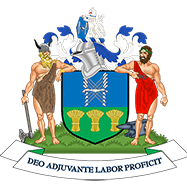
School scene - When Saturday Comes Filming Location
Sheffield History posted a topic in When Saturday Comes
The first time we're introduced to our main characters is in a school scene where Jimmy Muir is told in no uncertain terms by his school teacher that he can't be a footballer and will probably end up down the coal pit. He comes out of school unhappy with what he's heard (and taking his tie off) goes and scores a goal in the playground before taking Russ for a pint in the local pub! -
Paul Bruce Dickinson was born on 7 August 1958 in Worksop, Nottinghamshire. His mother, Sonia, worked part-time in a shoe shop, and his father, Bruce, was a mechanic in the British Army. His birth hurried the young couple, who were then just teenagers, into marriage. Initially, he was brought up by his grandparents; his grandfather was a coal-face worker at the local colliery, and his grandmother was a housewife. This is referred to in his song "Born In '58" from the album Tattooed Millionaire. Dickinson started school at Manton Primary in Worksop while his parents moved away to Sheffield. Soon afterwards, when he was six, he was also despatched to Sheffield, where he attended a primary school in Manor Top. After six months, his parents decided to move him to a small private school called Sharrow Vale Junior. Due to constant moving, Dickinson states that this period of his life taught him to be self-reliant as he was unable to make close friends. Dickinson has a younger sister, professional showjumper Helena Stormanns, who was born in 1963. He tried to isolate himself from her as much as he could when he was young, supposedly out of spite because she, unlike him, was a planned pregnancy and birth.
-
See if you can make sense of this Page 1 2084 THE LONDON GA2ETTS, APRIL 10, 1874. In Chancery. In the Matter of the Act 19 and 20 Victotia, chapter 120, intituled " An Act to facilitate Leases and Sales of Settled Estates;" and of the Act 21st and 22nd Victoria, chapter 77, intituled "An Act to amend and.extend the Settled Estates Act of 1350;" and of the Act 27th and 28th Victoria, chapter 45, intituled " An Act to further amend the Settled Estates Act of 1856." And in the Matter of the Coal and Minerals under certain Pieces of Land in or near Barlbrough, in the parish of Barlbrougb, in the county of Derby, containing in the whole twenty- two acres two roods and thirty perches, or thereabouts, settled by an Indenture of Settlement dated the 6th day of April, 1843, made between John Staniforth, Gentleman, since deceased, of the first part, James Sliemeld Jubb, Gentleman, of the second part, John Jubb, Gentleman and Olivia, his wife, of the third part, and Jane Stani- forth, Spinster, of the fourth part, and also settled by the Will of the said John Jubb, deceased, dated the 16th day of November, 1869. nPAKE notice, that a Petition in the above-mentioned JL matters was, on the 28th March, 1874, presented to his Honour the .Master of the Rolls by James Shemeld Jubb, of Morthen Hall, in the county of York, Gentleman, John Jubb, of Drake House, in the parish of Beighton, in the county of Derby, Gentleman, Henry Staniforth, of Mosbrough Hill, in the parish of Eckington, in the said county of Derby, Gentleman, William James Le Tall, of Handsworth Woodhouse, in the parish of Handswortb, in the said county of York, Surgeon, Jane Jubb, wife of the said James Shemeld Jubb, by the said John Jubb, her next friend, Jane Staniforth, wife of the said Henry Staniforth, by the said William James Le Tall, her next friend, John Staniforth and Annie Staniforth, Spinster, infants under the age of twenty.one years, by James Hounsfield, of Hacken- thorpe, in the county of Derby, Gentleman, their guardian, Mary Staniforth Le Tall, wife of the said William James Le Tall, by the said Henry Stanifortb, her next friend, James Morrison, of the borough and county of Newcastle- upon-Tyne, Iron Master, William Hunter, of the same place, Coal Owner, William John. Hutchinson, of the same place, Coal Owner, Hilton Philipson, of the same place, Coal Owner, Henry Tennant, of the city of York, Gen- tleman, and Alfred AHott, of Sheffield, in the said county of York, Accountant (which six persons last therein* before named carried on the business of Coal Masters, in partnership, under the style or firm of Appleby and Company), praying—1. That a lease of the seam of coal under the hereditaments mentioned in the draft lease annexed to the agreement of the 17th day of October, 1873, in the said Petition mentioned, might be authorized to be granted to the petitioners, James Morrison, William Hunter, William John Hutchinson, Hilton Philipson, Henry Tennant, and Alfred Allott, in accordance with the said agreement, for the term of years, and at the rent, and with and subject to the covenants and provisoes in the said draft lease mentioned, or with such modifications thereof or addi- tions thereto (if any) as the Court might consider necessary; that the said James Shemeld Jubb, or such other person as the Court should appoint, might be authorized to execute the said lease as lessor, so as to bind all persons beneficially interested in the premises thereby demised under the said settlement of the 6th of April, 1843, and the said will of the said John Jubb. deceased, respectively; that proper direc- tions might be given for setting aside and investing such portion of the rent to be reserved by the said lease as is required by the said Act of Parliament to be set aside and invested; and that such further or other Order might be made in the premises as the nature of the case might require ; and that such Petition will come on to be heard in due course before bis Honour the Master of the Rolls, when an application will be made on behalf of the petitioners for an Order according to the prayer of the said Petition. And notice is hereby further given, that the place where the said petitioners may be served with any Order of the Court, or Judge in Chambers, or with any notice relating to the subject of the said Petition, is the office of Messrs. Johnson and Weatheralls, Number 7, King's Bench-walk, Inner Temple, in the city of London.—Dated this 8th day of April, 1874. JOHNSON and WEATHERALLS; Agents for BURDEKIN, SMITH, and PYE-SMITH, Shef- field, Petitioners' Solicitors
-
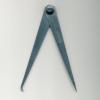
Derivation of the 'Main' suffix in the mining industry.
hilldweller replied to 100GroundsProject's topic in Sheffield History Chat
I've always understood that it refers to pits sunk to exploit the "Barnsley Main" seam of coal, which appeared at different depths according to the location of the pit. The seams generally sloping further down as you move east over the coalfield. Apparently the seam is about 1000 metres deep under Lincoln and is found as far north at Selby, North Yorkshire. I had the opportunity, years ago, to go down Harworth Pit, North Notts, where the Barnsley seam is about 850 metres deep. I went right down into the coal collection hopper by the deepest of the two shafts at around 1000 metres. The heat is amazing especially taking into acount the several megawatts of refrigeration that was in use. All gone now, the shafts were capped and a modern housing estate covers the site. -

Derivation of the 'Main' suffix in the mining industry.
ayfer replied to 100GroundsProject's topic in Sheffield History Chat
I suspect that ts the 'main' shaft. Pits often had more than one shaft to reach the coal seams underneath. Some for extracting the coal and muck and some for ventilation. Birley pit near Frecheville had A and B shafts I think. Someone with mining experience would maybe know. regards Ayfer -
That must be a reference to the Chequers Pub just past Weigh Lane going up Rough Bank. Plenty of Simonites around the area in the 19th and early 20th Centuries, here are just some from directories of the time and below is Simonite Lane on a 1935 map. 1833 Simonite Joseph, table blade forger, Rough bank, Park 1845 Simonite, Joseph, table knife maker, Rough Bank Park 1854/6 Simonite Isaac, grocer &c. 63 Broad Street, Park 1862 Simonite Isaac, 59 Broad Street, beeerhs 1879 Simonite Arthur,13 Bernard Lane, table knife ctlr 1879 Simonite Mrs. 1 Rough Bank, Eliza Shopkecper 1879 Simonite Isaac, coal dlr. & carter, 3, Court 10, Park Hill Lane. 1901 Simonite Thomas, 61 Staniforth Lane, cart owner 1901 Simonite Herbert, 22 Talbot Road, labourer 1901 Simonite John, 73 Weigh lane, shopkeeper, coal dealer & beer retailer, 1901 Simonite Thomas, 61 Staniforth lane Pk. cart owner, 1905 Simonite Leonard, 33 Rough Bank, shopkeeper
-

PC Samuel Radford - George Medal - 1940 Blitz Bravery
Edmund posted a topic in Sheffield War Years and The Sheffield Blitz
Four Sheffield men and two Royal Army Service Corps men were awarded the George Medal in 1941, for heroism during the Sheffield Blitz in December 1940. The George Medal had been instituted by King George V1 on 24 September 1940, equating civilian acts of bravery with those of the armed forces. There has been little recognition of these six brave men since the award of their medals, partly because of their own modesty. However I think that with the approach of the 80th anniverary of the Sheffield Blitz, it's time to celebrate these men. Some have them are mentioned in books, notably Margaret Drinkall's "Story of Sheffield at War" - M Drinkall , Paul Licence's 'Sheffield Blitz' and the Star and Telegraph's 1948 publication Sheffield at War but even then gaps and major errors exist. I have tried to gather whatever I could for each of these men - I think they deserve a thread each on this site - and hopefully others will be able to add further knowledge. Samuel Radford was born on 11th November 1912 in Bulwell, Nottinghamshire and was the only son of Samuel Radford a coal hewer, and Elizabeth of 157 Newmarket Road, Bulwell. Samuel was educated at Quarry road school, and on leaving became a joiner. At Bulwell he played cricket for the Main Street United Methodist team and was an excellent swimmer. He joined the Sheffield Police force in 1937. In 1940 he was a 28 year old police constable lodging at 2 Rolleston Road, Firth Park, with Annie Ward (herself a 53 year old ARP warden). Samuel spent five hours during the blitz tunnelling beneath wreckage to save 18 year old Joseph Greenwood, trapped in a cellar at 32 Fell Street, Brightside. Already rescued from the house were Joseph's parents Alfred and Minnie, his 13 year old brother (James) Harry, sister-in-law Elsie Greenwood (nee Day who had married Joseph's brother Frank in the summer of 1936, who were living at number 4 Fell Street) and her 5 year old daughter Pearl, It is not clear where Pearls' sister, 2 year old Elsie was. It is also unclear whether the husband and son of Joseph's sister Elsie, James McCormick and Michael were involved. As P.C. Radford dug under the rubble, at risk of further collapse and falling bombs, the Auxiliary Fire Service were putting out fires that were starting around him as he worked. Several times he himself was partly trapped. A matter of seconds after retrieving the lad, the whole of the cellar and building were engulfed in flames. He then helped at another house where a number of people were buried. He saved the lives of a total of 15 people. The Chief Constable, Major F.S. James told a reporter that Radford was "an extremely bashful and reticent young man". When a Nottingham Evening Post reporter interviewed his mother Elizabeth in March 1941 she was unaware that he had been awarded the George Medal. "I am not surprised" she said "because I knew of what he did during that air raid. He was at home last week-end, but he did not say very much about it". From the Yorkshire Post of 8th March 1941: "P.C.Radford's bravery resulted in the saving of the life of a 16 year old boy who was trapped up to his chest in debris in the cellar of a demolished house. P.C. Radford worked alone for three hours. All the time bombs were falling in the vicinity. After rescuing the lad he went and attended to some casualties and then went to a stable where some horses were trapped. He smashed down the door, removed the debris and rescued six horses. His bravery has already been acknowledged by Sheffield residents, 200 of whom have signed a petition to the Chief Constable. When told of the award, Radford said "This is not only an honour for me, but also one for the Division. It will be a nice wedding present from the King". He then revealed that in a few weeks he is to be married. It is a police-station romance, for the bride is to be Miss Gwen Smith, a telephone operator at the police headquarters to which Radford is attached." Gwen was the daughter of a police inspector. Their wedding took place in June 1941 at Hillsborough Trinity Methodist Church, attended by many friends and relatives from Bulwell, and Samuel's sister Kathleen was one of the bridesmaids. Samuel and Gwendoline had three girls (Audrey, Beryl and Valerie) followed by a boy, Samuel junior, in 1949. Samuel died on 6th June 1979 at 91 Firth Park Crescent. -

Leslie Crofts - George Medal - 1940 Blitz Bravery
Edmund posted a topic in Sheffield War Years and The Sheffield Blitz
Four Sheffield men and two Royal Army Service Corps men were awarded the George Medal in 1941, for heroism during the Sheffield Blitz in December 1940. The George Medal had been instituted by King George V1 on 24 September 1940, equating civilian acts of bravery with those of the armed forces. There has been little recognition of these six brave men since the award of their medals, partly because of their own modesty. However I think that with the approach of the 80th anniverary of the Sheffield Blitz, it's time to celebrate these men. Some have them are mentioned in books, notably Margaret Drinkall's " Story of Sheffield at War - M Drinkall, Paul Licence's 'Sheffield Blitz' and the Star and Telegraph's 1948 publication Sheffield at War but even then gaps and major errors exist. I have tried to gather whatever I could for each of these men - I think they deserve a thread each on this site - and hopefully others will be able to add further knowledge. Leslie Crofts was born on 14th September 1908, the son of George and Mary Jane Crofts - George was a coal miner of Lovetot Road. Leslie had attended the Woodbourne Road Council School before becoming an air-raid warden in September 1938. In 1938 he was married to Susannah (her maiden name was also Crofts) and in 1940 they had a 1-year-old daughter, Jessie. He worked at the Nunnery Colliery yard. The 32 year old Leslie Crofts was living at 106 Cottingham street in 1939, though reports state he was inhabiting 22 Coleridge Road, Attercliffe, which was the family house of his in-laws, Sam and Margaret Crofts, who had lived there since the mid '30s. In his capacity as an A.R.P. Warden, Leslie was sent to Staniforth Road after reports that a number of civilians had been trapped in a cellar. There he found a bomb crater of almost 30ft in diameter, under which a fractured gas main was ablaze. Defying the flames and digging with his bare hands, Crofts made a tunnel into the cellar large enough to allow three injured people to escape from the debris. He made sure they were safe before returning to the hole where he managed to attend to another two injured persons. Considerable care had to be taken as the debris could have collapsed at any time, burying the trapped victims and Crofts himself. All the time the rescue was being made, enemy bombers, using the blazing crater as a beacon, were dropping bombs nearby. Two police officers were quickly on the scene and helped in the rescue. They spoke highly of Crofts’ bravery in the face of fire, bombs and the possibility of being buried alive. Leslie was awarded a George Medal in March 1941 and was interviewed by a local reporter. He said that when the raid started he was working as a shunter in the yard of Nunnery Colliery. When the bombs started to fall he went to see if the wardens needed any help. He told the reporter: ‘I found there were things wanted doing so I buckled to, but I did no more than my duty. I only did what any other warden would do and I regard the award of the George Medal as a tribute to them also, as they all played their part.’ From the Yorkshire Post 8th March 1941: "Mr Croft escaped the embarrassment of being congratulated by his many friends by going to bed. In the district where he lives he is referred to as " the unknown hero", for after doing his heroic work he disappeared without leaving any clue as to his identity. His wife Susannah said: "I am proud of him. He is shy, and does not want any publicity. He only did his duty. When he came home after the Blitz he never said a word about what he did. His face was bleeding and his trousers were nearly torn off. Our own house was practically wrecked." A neighbour said: "We are glad he has been honoured, but we think some attempt might be made to provide him with another home." -

A Glossary Of Words Used In Sheffield 1888
Old rider replied to tozzin's topic in Sheffield History Chat
I had been told Coal Aston was originally called Cold Aston. Looking up Dronfield history I find that the Coal Aston mine was opened in 1785. An old ordnance survey attached shows an old mine in the green area. An older map shows some woods on the Sheffield side of Coal Aston as Coal pit woods. The history site claims Stubley on the other side of Dronfield was mined from the 16th century and Car Lane mine opened in 1795. What is now Dronfield Sports & Social club on Carr Lane is known to be originally a Miners Welfare club, and opposite is the Miners Arms pub. I was told the mine there was a drift mine. There was also a mine at the top of Mickley Lane where some new houses have just been built. When this site was Standall Tools the upper car park was actually on top of the old mine spoil tip, and a square brick structure in a service yard was said to protect the old mine shaft. -
There are many posts on this very site mentioning Coal Pit Lane and containing probably more information in one place than you will find anywhere else EllisSearcher . Here is a link to search results I have just done, I hope you find something useful in that lot --------- https://www.sheffieldhistory.co.uk/forums/search/?q="coal pit lane"&sortby=relevancy
-
Could also have been the Tinsley Colliery, some historical [1870] background information about which, is given below. Tinsley Colliery. This Colliery is situated about 3 miles to the East of Sheffield, on Lord Fitzwilliam’s Estate. The extent of the Royalty is 1,000 Acres. The demise includes the following Seams. Top Bed, Furnace Bed, High Hazles, Barnsley Bed, and the heads of the Lease are, Term 21 years from 25th March 1866. Certain Rent £1,000 per annum, Royalty Rents: - Top Bed, £80 per acre, Furnace do., 67.10.0 – do. High Hazles, 107.10.0 – do. Barnsley Bed, 165.0.0 – do. Rent for surface £4.10.0 per acre. Several pits have been sunk on this Royalty and the following are now in operation. – No. 6 pit to the thick Coal. This Seam contains 4ft 6ins of Coal and is wet at 60 yards from the surface. No. 2 pit to the High Hazles Seam (120 Yards) which is 3ft 6ins in thickness. No. 3 pit to the High Hazles and drifted out to the Thin Coal 25 Yards above the former Seam. West Retford Pit: is sunk to the Barnsley Bed which is here met with at 217 Yards from the surface and 4’.6” thick. Owing to a fire which occurred in this pit, it has been closed for about 6 months, but operations are now going on with a view to re-opening it, and I expect it will be at full work before the Summer. The actual working powers of these pits are, No. 6 pit – 100 tons a day. No. 2 pit – 200 tons a day. No. 3 pit – 100 tons a day. West Retford pit – 400 tons a day. Total 800 tons a day. This is equal to an annual produce of above 200,000 tons, but to allow for contingencies I have taken the annual vend at 160,000 tons. From a careful measurement of the Working plans, it appears that the quantity of coal remaining would supply the above vend for a period greatly exceeding the unexpired term of the Lease. I am of opinion that no further sinking or increase of plant will be required during this time, with the exception of a new pit to win the dip coal in the High Hazles and Upper Seams. This should be completed within 6 years, and I estimate that the cost of it will not exceed £20,000. The produce of this Colliery finds a ready market in Sheffield, and the neighbourhood to which access is obtained by means of the Sheffield Canal. There are two Wharves in Sheffield, to which the Coals are sent, these Wharves are held on advantageous Leases. Arrangements are in progress for connecting the Colliery Railways with the New Branch of the Manchester, Sheffield, Lincolnshire Railway, which will have the effect of introducing the Coals to a variety of New Markets. Attached to this Colliery, are 60 Coke Ovens from which sells at very remunerative prices, and I have no doubt that if this branch of trade was extended the result would be highly favorable to the profitable working of the concern. Cost of Working and Selling Price. It appears from the Colliery books that the cost of Working, including all labour, materials, Royalty and other rents is. - 5s.9d. per ton. And the price realized for the Coals after deducting the Expenses of transit to Sheffield is. - 6s.10d. per ton. Leaving a net profit of. - 1s.1d. per ton. Valuation. During the present year I estimate that owing to the temporary suspension of the West Retford pit the quantity raised and sold will only be 130,000 tons. 130,000 tons at 1s.1d. gives a Revenue of. - £7,041.13s.4d. From which must be deducted the cost of opening out & repairing the West Retford pit – say. - £2,000.0s.0d. The present value of this allowing a purchaser 14 per cent for risk and redemption of Capital is. - £4,422.10s.0d. For the remainder of the term of the Lease, viz. 16 Years the profit will be 160,000 tons @ 1s.1d. = £8,666.13s.4d. Taking this as an annuity for 16 years commencing 1 year hence, and allowing 14 per cent as before, the value in present money is. - £47,629.18s.5d. The Stock of this Colliery is entirely the property of the Lessee, and is estimated to be worth £18,000. At the end of the Lease the Lessor has the option of taking it as a whole. As there will still be a large area of the Coalfield untouched, it is evident that the Stock will then be disposed of at its full value. Deducting 1/3rd for deterioration we have remaining a sum of £12,000 to be received 17 Years hence. The present value of this is. - £5,235.12s.0d. From this must be deducted the Capital required for sinking the proposed pit to the High Hazles Seam say £20,000. This must be expended within 6 years, say on average 4 Years hence: - Reducing this sum to present money we have a deduction of. - £16,454.0s.0d. Value of Tinsley Colliery Exclusive of the reversion of the Wharf Leases. - £40,834.0s.5d.
-
Information from the London Gazette, Sheffield Daily Telegraph and Graces Guide (further information available via links from Graces): In 1875 a High Court case was reported between plaintiffs James Morrisson, William Hunter, and Hilton Philipson (all Newcastle) Alfred Allott (Sheffield) and Henry Tennant (York) - Appleby and Co of the Renishaw Ironworks , who owned land and coal seams at Barlborough at the Cottam colliery. The defendant was Margaret Morton who claimed to own 6 acres of adjacent land. In 1873 the Cottam had "got" coal from the adjacent land, and various actions for trespass, offers for purchase had been going on. The case was agreed out of court. In November 1876 the failure of Alderman Allott was announced - liabilities amounting to £210,000. This was the biggest Sheffield failure since Parker, Shore and Company's bank, but luckily most of the creditors were not local. In March 1882 Bankruptcy proceedingswere still proceeding against Alfred Allott Public Accountant of Sheffield (Alfred Allott and Company – partners Thomas Hadfield and John Kidner), an Iron Master at the Renishaw Ironworks (Appleby and Company – partners James Morrisson, William Hunter, Hilton Philipson, Henry Tennant, William John Hutchinson deceased), also at Woodford Northampton (Newbridge Iron Ore Company), also an Iron Mine Proprietor at Saint Austell (Ruby and Trethurgy Iron Mine Company) also formerly a colliery proprietor at Brightside (Pitsmoor Coal Company – partner John Crossley), In November 1887 the Manchester, Sheffield and Lincolnshire Railway gave notice in Parliament that it intended to apply to make a number of new railways, including a branch into the premises of Messrs Appleby and Company at the Renishaw Ironworks. 1888 Certainly operating before this date as Emma, the 87 year old widow of James Appleby (of Renishaw Iron Co) died then. 1920s-30s Difficult times for the company as demand for pig iron fluctuated with consequent firing and shutting down of furnace and hiring/firing of workers. 1937 Listed Exhibitor - British Industries Fair. Pig Iron Brand "Renishaw" Foundry Iron, Derbyshire quality , for general engineering castings and light castings. Special Low Phosphorous and High Manganese iron for all grades of high class castings. (Stand No. D.821) In March 1937 a notice was published advising that the High Court had made an order for a meeting of the shareholders of the Renishaw Iron Company to consider a Scheme of Arrangement of their shares. 1938 Loan from Tinsley Park Colliery Company in exchange for agreement that control of the company and right to supply coke were secured by Tinsley Park 1941 Patent - An improved wheel attachment for prevention of wheel spin. 1945 Patent - Improvements in or relating to chairs for railway lines. 1951 Nationalised under the Iron and Steel Act; became part of the Iron and Steel Corporation of Great Britain. 1956 Purchased by Tube Investments for its complementary pig iron facilities. 1968 British Steel announced that pig iron production would cease with 225 out of 420 losing their jobs. This was a consequence of closing the open hearth steel making plant at Park Gate Iron and Steel Co's works which would reduce demand for pig iron from Renishaw to below economic levels.
-
There were many coke ovens about at the time, so you would need to find archived documentation. I think it may be too early for Beighton Colliery ( or later Brookhouse ). The ones that spring to my mind near Beighton, which I think had coke ovens at the time are Hollbrook, Norwood, Wiggin Tree, Birley West, possibly Fence and Orgeave as mentioned above. I have not looked it up but I am sure there were many more with coke ovens, coke was in big demand for steel production. At that time Birley West was a large producer of coke from the Silkstone Seam and had 129 beehive coke ovens. I would think that some Beighton men would have worked there, just a short walk through the Shire Brook valley or a ride on the train up the branch line through Birley East. Though no coal came from that pit after 1908 the coke ovens produced coke from the other Sheffield Coal Company pits until about 1918. There are so many places he could have worked, hopefully some of our experts on here may know where records can be found.
-
From a booklet by Paul Hodkinson, In 1938 the Parkwood Ganister and Coal Mine opened, the mine is described in an article, ‘The City’s Most Central Pit is also a happy one’ The Star 1st April 1954. The mine was a drift mine, the shaft being driven horizontally into the hillside instead of downwards. It was described as a happy pit, because of no falls, accidents, labour trouble or strikes. The Labour Force was 28 miners, 5 surface men and one pit pony ‘Tommy’. The mine produced about 200 tons of ganister and 40 tons of coal per week. On the surface were small pit head baths and a small canteen for miners. By 1954 the main road had been driven about half a mile into the hillside. Mr. Yates retired director of Messrs, Pickford, Holland and Company Ltd, who took over the mine in 1945, from Webster and Company, stated that it was not a drift mine, as the level dropped 1 in 10 to the east, and water flowed down to the face from where it had to be pumped out. The coal was sold to Neepsend Power Station until the power station’s local residents complained of sulphur fumes from it. The mine was closed in 1963 because it was uneconomic.
-
We lived in the post war prefabs from 1957 to 1965 and they were coal fired for heating (otherwise all electric). We had a coalman come every week and stock up the recycled Anderson shelter coal bunker with coal, - not coke. The clean air act 1956 was invoked on these dwellings in 1965, - which coincidently coincided with their demolition following the aftermath of the infamous 1962 gale and the devastating effect this had on some of them. The new prefabs which replaced them (Vic Hallam / Finnegan) from 1966 were (coal) gas fired, - much cleaner, but even that was replaced with the even cleaner North Sea gas (natural gas) in 1972. We moved from the prefabs in 1965 to the 1930s corporation housing on the Arbourthorne which at that time were also coal fired, with the clean air act coming into force in 1968 and necessitating a change to coke, - although by that time many were switching to gas fired heating.
-
I attended Hunters Bar Infants' School from Jan 1947. There was an open coal fire in the classroom. After a few weeks it started to snow and I didn't attend for weeks. The Reception class teacher was Mrs Rawlinson(?); I missed much of the year, starting in January and then the school closed for the snow. Miss Needham was the head. I remember Miss Woolman and Miss Newton. In the main school I was taught by Miss Towle for two years in J1 and J2. In J3, we had Mr Jessop and Mr Flannery. The latter was an entertaining and genial teacher but later became the permanently angry MP for Hillsborough. My parents took me out after J3 as I was not doing well enough. The head of the main school was Mr Thomas Bingham. There was the thickset and terrifying Mr George Long and the inspiring Clifford Kelly, also a naturalist and published poet.

